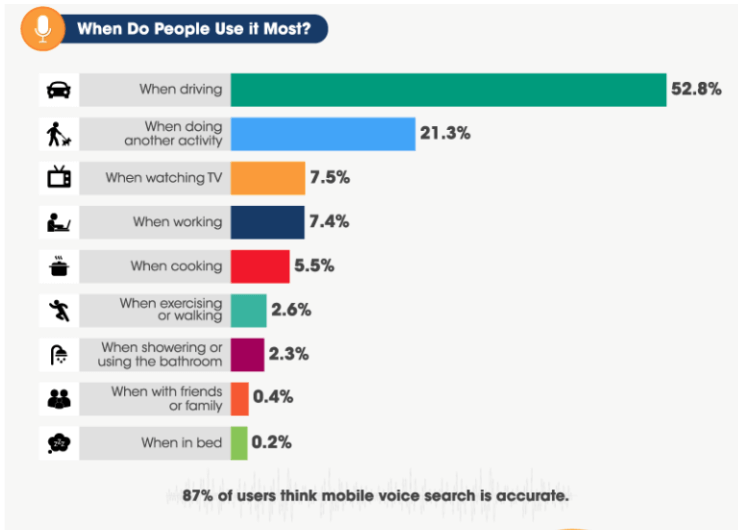Voice Search is Growing in Popularity – is Your Website Ready?
We already have Artificial Intelligence (AI) based voice-controlled personal assistants like Alexa, Amazon Echo and Google Home, and tech giants are continuously training their AI assistants with real data to yield better results. These assistants have already started making a lot of positive impact in our lives and going forward their accuracy in understanding us will enhance and our dependency on them will increase.
There are already more than 400 million Google Assistant based devices in use and 20 million Amazon Echos sold, and a recent study indicated 50% of the searches on the internet will be made via voice by 2020.
So as a business owner or website manager, it is important that you understand voice search and how to optimise your content to perform well.
5 Ways to Optimise for Voice Search:
1. Your Local SEO is important
The first step is to understand the scenarios in which voice search is usually used – it is generally when our hands are already occupied and we aren’t able to type our question in manually. Such activities might include: driving, cooking, writing etc.
A study it was found that 22% of voice searches are local, and more than 50% of searches are made while driving.
Queries such as “where is the closest cafe”, “where is the best hotel in the town”, and “directions to the closest petrol station” are the types of things that drivers are looking for.

Having the correct contact details for your business including your address, contact number, customer review ratings and any other relevant information is important for optimising your website for local search. Having this information clearly identifiable on the homepage of your website will make it easier for your business to be found.
2. Improve Your Page Speed
People want quick results. This fact becomes even more true in case of a voice search query.
Backlinko study says, “Page speed plays a major role in voice search SEO. The average voice search result page loads in 4.6 seconds (52% faster than the average page)”.
3. Using Schema
Schema is a markup language which adds microdata to your site and helps you provide search engines with more information. With the help of schema, you can describe the data and content on the site. It helps the search engine to understand your business more accurately and improves the way your website is displayed in Google.
Some examples of schema including publication dates, star ratings, event details, author and more.
4. Target the feature snippet
Google Home and Google Assistant currently source most of their answers to voice queries from the ‘featured snippet’ section. As we discussed in a previous blog, optimising your website to perform well in featured snippets is a good SEO tactic for both voice search and traditional search.
Featured snippets are the ‘quick answers’ section that often appears on a Google search results page before any of the actual website listings. They pull information from websites to give users quick and simple answers to commonly asked questions.
The best way to optimise your website for featured snippets is to write your page content in a question / answer format – pose the exact question that someone might be asking Google and then answer it in one or two simple sentences directly below.
5. Improve your FAQ page
Following on from our featured snippets tip, we also recommend updating your FAQ page (or adding one if you don’t already have one). As FAQs pages usually follow the question / answer format, this is a simple way for you to answer many different questions that your audience might be asking via voice and for the results to be clear and searchable for search engines.
Join the Conversation:
Share your experiences optimising your website content for voice search! Let us know what has worked well for you and which is the most challenging part of voice search optimisation!




